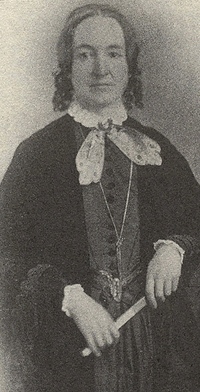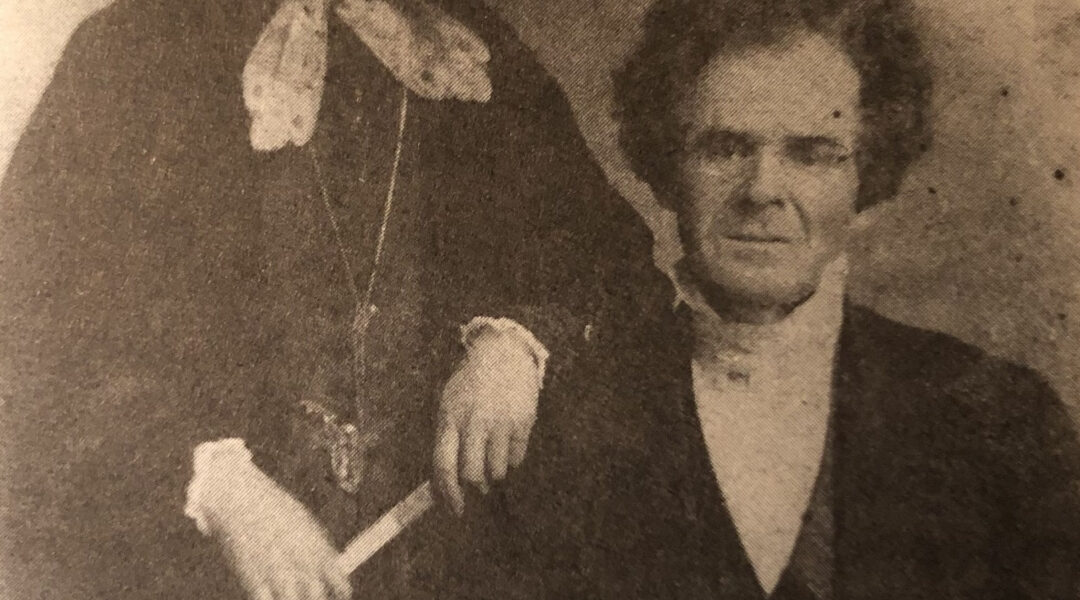
In 1860, a 43-year-old mother named Elizabeth Packard stood at the center of a nightmare that no law could save her from — because it was the law itself that had condemned her.
She wasn’t accused of violence. She wasn’t delusional, hysterical, or dangerous. Her only “crime” was disagreeing with her husband.
After 21 years of marriage and six children, Theophilus Packard, a strict Calvinist minister, decided his wife’s growing independence — her questioning of religious doctrine, her outspoken defense of women’s education, her refusal to remain silent — made her “insane.”
Under Illinois law at the time, a husband could have his wife committed to an asylum without trial, testimony, or medical examination. His word alone was enough.
And so, one morning, without warning, Elizabeth was torn from her children and locked inside the Jacksonville Insane Asylum.

Inside the institution, she entered a world that would change her forever.
What she found there wasn’t a hospital for the mentally ill — it was a prison for the outspoken.
The women around her weren’t raving lunatics or lost souls. Many were wives who had disagreed with their husbands, daughters who resisted arranged marriages, or women whose inheritance someone else wanted to control.
The asylum was filled not with madness, but with defiance — and the system had branded defiance as insanity.
At first, Elizabeth was shocked, then terrified. She wrote later that she could feel herself slipping toward despair. But instead of breaking, she began to observe. To write. To record everything she saw.
Smuggling scraps of paper past the attendants, she documented the conditions: the cold rooms, the meager food, the women tied to their beds for hours, the ones who were silenced when they cried out for justice.
Her pen became her weapon.
“I am not mad,” she wrote. “But I am treated as if I am, only because I dare to think for myself.”
Three years passed before she was finally given a hearing — not because the law required it, but because friends and allies on the outside refused to give up.
In court, Elizabeth stood before a jury of twelve men and calmly told her story. She spoke of the law that stripped her of her freedom, of the asylum that tried to erase her voice, and of the truth that countless women suffered the same fate.
The courtroom fell silent.
The jury deliberated for just seven minutes before returning their verdict: Elizabeth Packard was sane.
She was free.
But freedom was not the end of her story — it was the beginning.

Once released, Elizabeth discovered that her husband had sold their home, taken their children, and abandoned her with nothing.
Rather than retreat in defeat, she went to work.
She wrote book after book — The Prisoners’ Hidden Life (1868), Marital Power Exemplified (1870), and others — exposing the horrors she had witnessed and the injustices she had lived through. Her words traveled farther than she ever expected, read by lawmakers, suffragists, and reformers across the country.
She began to campaign tirelessly for legislative reform, traveling from state to state, speaking to anyone who would listen — often facing ridicule and hostility from those who believed women should remain silent.
Her work led to sweeping legal changes.
In Illinois, a law was passed requiring a public hearing before anyone could be involuntarily committed. Similar laws soon followed in other states.
Elizabeth Packard’s persistence also fueled broader conversations about women’s rights in marriage and mental health, inspiring future activists who would fight for equality and autonomy.
She lived long enough to see her words change lives.
By the time she died in 1897, Elizabeth had helped dismantle one of the most quietly cruel systems of her time. She had turned personal injustice into a movement — one that gave women the right to their own minds, their own freedom, and their own truth.
Her story remains a haunting reminder: once, a woman could lose everything — her children, her home, her freedom — simply by speaking her mind.
And it is also a beacon of hope: because one woman’s courage proved that silence can be broken, and that truth, once spoken, can change the law itself.
Elizabeth Packard wasn’t just freed from an asylum — she freed generations of women who came after her.




